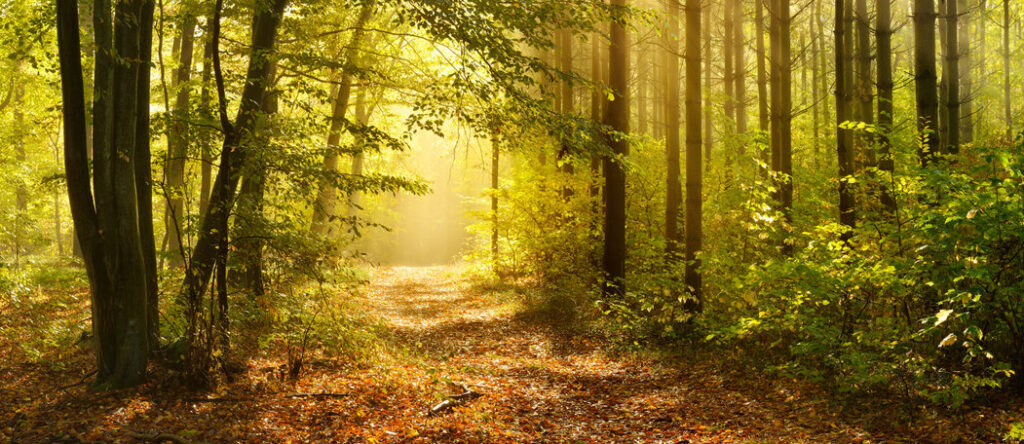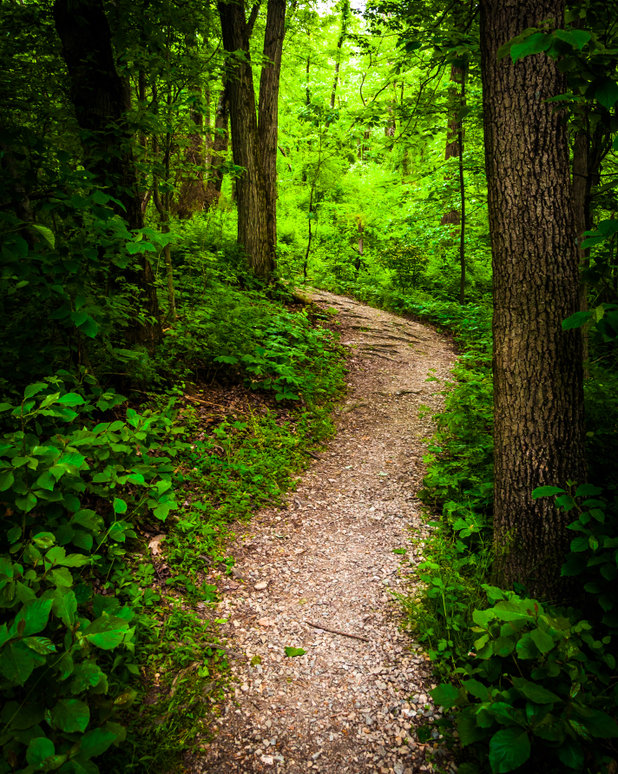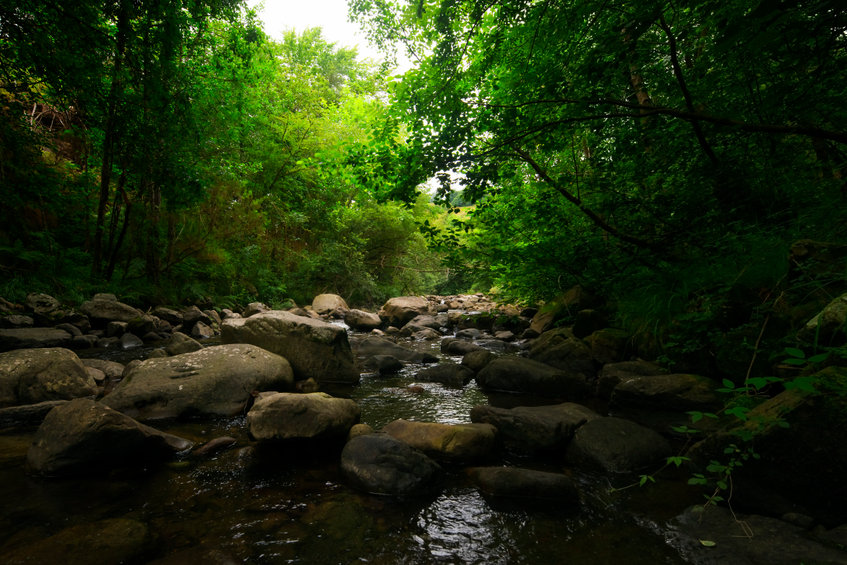October 20th, 2021

The Art of Shinrin-Yoku
Global trends for 2020 state that “J Wellness” has been trending with key search words including Wabi-Sabi, the philosophy of accepting your imperfections and making the most out of life, and Shinrin-Yoku, taking a forest walk through your sense, also known as forest bathing among others like Kintsugi, “art of repairing broken pottery”. Marie Kondo has become our guru for decluttering our spaces while Iki-iki Plazas are created, known as facilities for generational mingling, recreation, bonding and learning . (1) J Wellness has a lot to unpack this year for sure. For me, Shinrin-Yoku sounded the most intriguing and most interesting.
As an amateur hiker, I can spend days exploring the woods. I love it. Fresh air with the smell of earth and green, pathways winding through trees as they keep watch over it’s inhabitants, the lull of water just beyond sight as the birds sing songs of happiness and joy. The forest is alive and pulses with an energy. Or at least when I hike, this is how I romanticize it. For me, it’s a connection. Every few years, I rent cabins out just so I can unplug for a few days and become connected in a way that’s impossible to do in a city. I feel like I become one with the ecosystem, breathing in and connected. When I come back, I find myself more focused, less stressed, feel refreshed, rejuvenated and ready to handle my workload. So when I came upon the idea of Shinrin-Yoku, I was surprised I have never heard of it.
I immediately researched and purchased two books: “Forest Bathing- How Trees Can Help You Find Health and Happiness” by Dr. Qing Li and “The Japanese Art of Shinrin Yoku” by Yoshifumi Miyazaki.
As I read through these books, so much resonated with me.
In his book, Dr. Li wrote, “Shinrin in Japanese means ‘forest’, and Yoku means ‘bath’. So shinrin-yoku means bathing in the forest atmosphere, or taking in the forest through our senses. This is not exercise, or hiking, or jogging. It is simply being in nature, connecting with it through our sense of sight, hearing, taste, smell and touch. Indoors, we tend to use only two senses, our eyes and our ears. Outside is where we can smell the flowers, taste the fresh air, look at the changing colours of the trees, hear the birds singing and feel the breeze on our skin. And when we open up our senses, we begin to connect to the natural world.” (2)
The EPA reported in September 2021 that Americans, on average, spend approximately 90 percent of their time indoors, where the concentrations of some pollutants are often 2 to 5 times higher than typical outdoor concentrations. (3) By 2050, 66% of the world’s population is projected to live in cities. (4)
True enough, we are in the middle of a pandemic, however, much of this time is being spent in front of an electronic device.

Many, many studies have been focused over the years on the benefits of Shinrin-Yoku.
- Relieve stress and assist with symptoms of “burn out”
- Boost immunity
- Reduce anxiety
- Assist with a more restful sleep
(5), (6), (7), (8)
How do I practice shinrin-yoku?
The actual practice of shinrin-yoku is easy to plan for. You simply take a few hours out of your busy life, and visit a forested area. Here, walk through the forest and use your senses to immerse yourself.
Using the senses you can:
- Use your olfactory sense of smell and breathe in the natural aromatherapy the forest provides. Breathing in deeply, you can almost taste the freshness of air. Did it rain recently? Walking through a damp forest after rain has a very unique smell. This one comes from bacteria in the soil, and is known as ‘geosmin’ (literally “Earth smell”). (9) Forests are immersed in air filled with phytoncides, which are tree’s natural defense systems. These oils, called terpenes smell good and improve your mood, simultaneously calming and energizing us. (10)
- Use your sense of touch, by placing your hands on the tree trunks or even walking barefoot on the grass. If there is a stream nearby, dip your toes in the water and relax.
- Use your sight to take in different shades of nature. Watch sunlight filter through the tree branches.
- Use your sense of hearing to listen to birds singing, swaying of branches with the gentle breezes, and let nature bring us to a heightened state of sensory awareness.
In Yoshifumi Miyazaki’s book, “The Japanese Art of Shinrin Yoku” he brings up a way to amplify the positive effects of the environment with meditation and mindfulness. He suggests finding a comfortable place to sit, spending a few minutes to bring your full attention to your breath, breathing naturally, relaxing your muscles, and let go of tension. Breathing in and out remain in meditation until your ready, and then take a count to five to bring yourself back to your surroundings. (11)
All of this leads to awareness of a sixth sense, a state of mind that connects you with nature. Its from this awareness that can lead us to calm and clarity.

Feel inspired for your own Shinrin-Yoku session? Wishing you all the peace, clarity and happiness you can find there.
References:
- https://blog.bioticsresearch.com/top-5-global-wellness-trends-in-2020
- Forest Bathing- How Trees Can Help You Find Health and Happiness by Dr. Quing Li published year 2018
- https://www.epa.gov/report-environment/indoor-air-quality
- https://population.un.org/wup/publications/files/wup2014-highlights.pdf
- https://www.liebertpub.com/doi/10.1089/eco.2019.0071
- https://www.ncbi.nlm.nih.gov/pmc/articles/PMC2793341/
- https://www.ncbi.nlm.nih.gov/pmc/articles/PMC6589172/
- https://ayuswellness.com/2020/02/10/how-forest-bathing-can-help-us-sleep-better/
- https://blogs.unimelb.edu.au/sciencecommunication/2014/10/01/the-smell-of-rain-before-during-and-after
- https://www.animist.eco/forest-meditation
- The Japanese Art of Shinrin Yoku by Yoshifumi Miyazaki published year 2018
